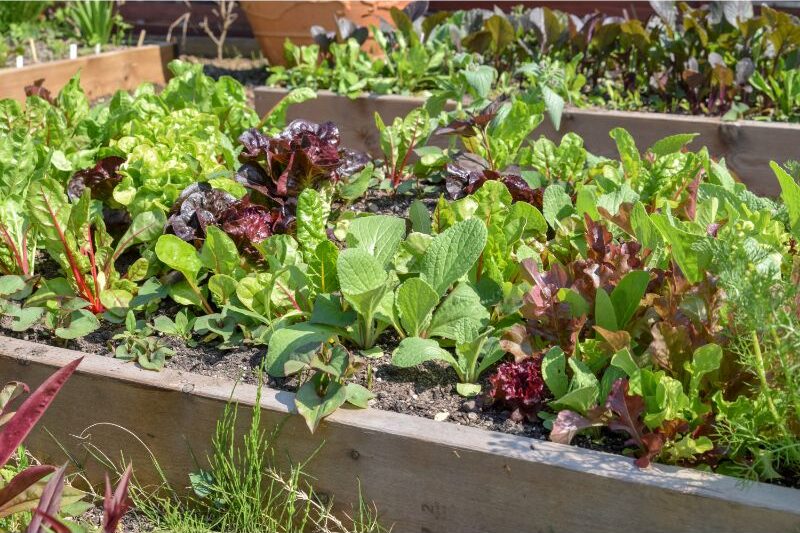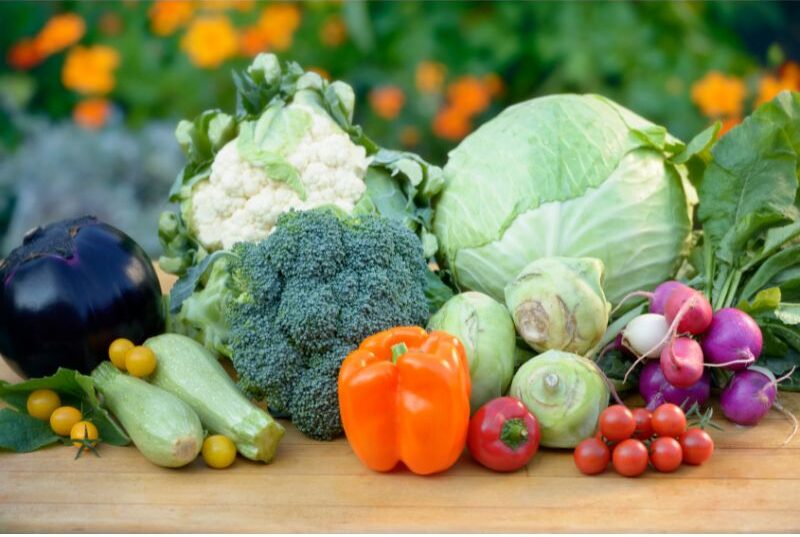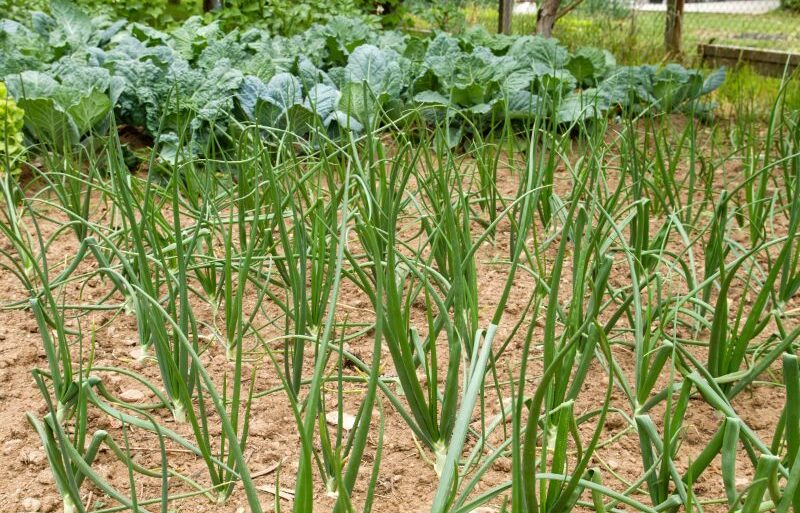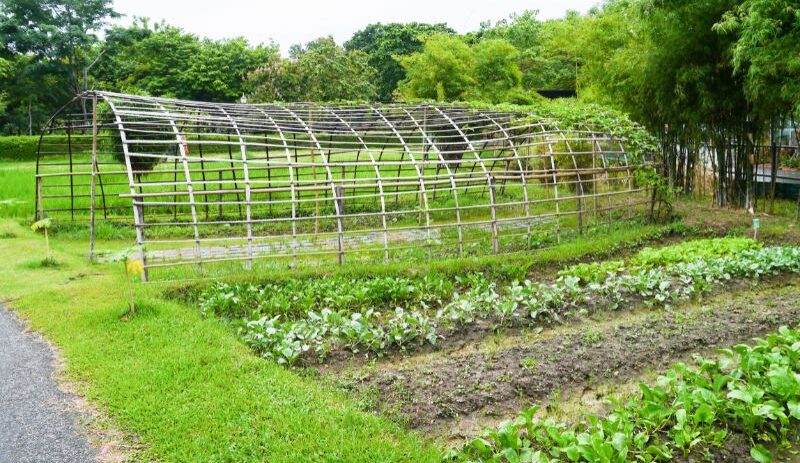
The Joy and Benefits of a Kitchen Garden
In our fast-paced, convenience-driven world, the concept of a kitchen garden may seem like a throwback to simpler times. However, growing our own herbs, vegetables, and fruits right outside our kitchen is more than just a nostalgic pastime—it’s a practical and enriching lifestyle choice. A kitchen garden not only provides a steady supply of fresh, organic produce but also brings numerous benefits that can enhance your culinary experiences, health, and overall well-being. Here’s why having our kitchen garden close to our kitchen has been game-changer.
Unparalleled Freshness
Imagine stepping out your door and picking a handful of basil or a ripe tomato just moments before preparing your meal. The freshness of home-grown produce is unmatched. When fruits and vegetables are harvested at their peak ripeness, they offer superior flavor and texture. This immediate access to fresh ingredients has honestly elevated our cooking, making even the simplest dishes burst with flavor.

Nutritional Benefits
Freshly picked produce retains more nutrients compared to store-bought items that have traveled long distances and sat on shelves. Home-grown vegetables and herbs are free from preservatives and chemicals often used in commercial farming and storage. By eating directly from our garden, we ensure that our family diet is rich in vitamins, minerals, and antioxidants essential for good health.
Cost Savings
While setting up a kitchen garden requires an initial investment in seeds, soil, and possibly containers or raised beds, the long-term savings are significant. Growing our own produce has drastically reduced our grocery bills, especially for high-yield and high-cost items like herbs, tomatoes, and leafy greens. Over time, our garden will provide a substantial return on our investment.
Convenience and Accessibility
Having a garden close to our kitchen means we can quickly access fresh ingredients without needing to drive to the store. This convenience encourages us to cook more at home, leading to healthier eating habits. It also means we can harvest only what you need, reducing food waste and ensuring that every meal is as fresh as possible.

Environmental Impact
Our kitchen garden also contributes to environmental sustainability. By growing our own food, we are reducing the carbon footprint associated with transporting produce from farms to stores. Additionally, home gardens often use organic and sustainable practices, which are better for the soil, water, and local wildlife. Composting kitchen scraps and garden waste also reduces landfill contributions and enriches your garden soil.
Educational Opportunities
A kitchen garden is a fantastic way to learn about plant biology, ecosystems, and sustainable living. It’s also a great educational tool for children, teaching them where food comes from and the importance of environmental stewardship. Gardening can foster a sense of responsibility and a deeper appreciation for nature.
Mental and Physical Health
Gardening is a form of physical exercise that can improve strength, flexibility, and endurance– a body in motion stays in motion. It also offers mental health benefits, such as reducing stress and anxiety. The act of nurturing plants and watching them grow provides a sense of accomplishment and joy. The garden becomes a peaceful retreat, offering a break from the hustle and bustle of daily life.

Practical Tips for Starting Your Kitchen Garden
Start Small
Begin with a few easy-to-grow herbs or vegetables.
- Basil
- Parsley
- Lettuce
- Cherry tomatoes
These are great starter plants that require minimal space and care.
Choose the Right Spot
Select a location that receives at least 6-8 hours of sunlight per day. Ensure the spot is easily accessible from your kitchen for quick harvesting.
Use Quality Soil
Invest in good-quality soil rich in organic matter. Healthy soil leads to healthy plants, which produce more abundant and nutritious yields.
Water Wisely
Consistent watering is crucial, but avoid overwatering. Most plants prefer deep, infrequent watering to encourage strong root systems.
Incorporate Containers
If space is limited, use containers or vertical gardening techniques. Pots, hanging baskets, and wall-mounted planters can maximize space and add aesthetic appeal.
Rotate Crops
To maintain soil health and reduce pest issues, practice crop rotation. Plant different types of crops in different areas each season.
Delicious Recipes Using Kitchen Garden Produce
Fresh Garden Salad
Ingredients
- Mixed Greens
- Cherry Tomatoes
- Cucumbers
- Radishes
- Fresh Basil
- Parsley
Instructions
- Combine all ingredients in a large bowl.
- Dress with olive oil, lemon juice, salt, and pepper.
Notes
Herb Pesto
Ingredients
- Fresh Basil
- Garlic
- Pine Nuts
- Parmesan Cheese
- Olive Oil
Instructions
- Blend basil leaves, garlic, and pine nuts.
- Gradually add olive oil until smooth.
- Stir in grated Parmesan.
- Use as a sauce for pasta or spread on sandwiches.
Notes
Tomato and Mozzarella Caprese
Ingredients
- Fresh Tomatoes
- Mozzarella Cheese
- Basil Leaves
- Olive Oil
- Balsamic Vinegar
- Salt
- Pepper
Instructions
- Slice tomatoes and mozzarella.
- Arrange on a plate, alternating slices.
- Top with basil leaves, drizzle with olive oil and balsamic vinegar, and season with salt and pepper.
Notes
Epilogue
A kitchen garden is more than just a source of fresh produce; it’s a lifestyle choice that brings numerous benefits. From superior taste and nutrition to cost savings and environmental sustainability, growing our own food is a rewarding endeavor that enriches our life in countless ways. Whether you have a sprawling backyard or a small balcony, there’s a kitchen garden solution for you. Embrace the joy of gardening, and enjoy the freshest, healthiest, and most delicious meals right from your doorstep.
Happy gardening!
**This post may contain affiliate links, which means I make a small commission at no extra cost to you**